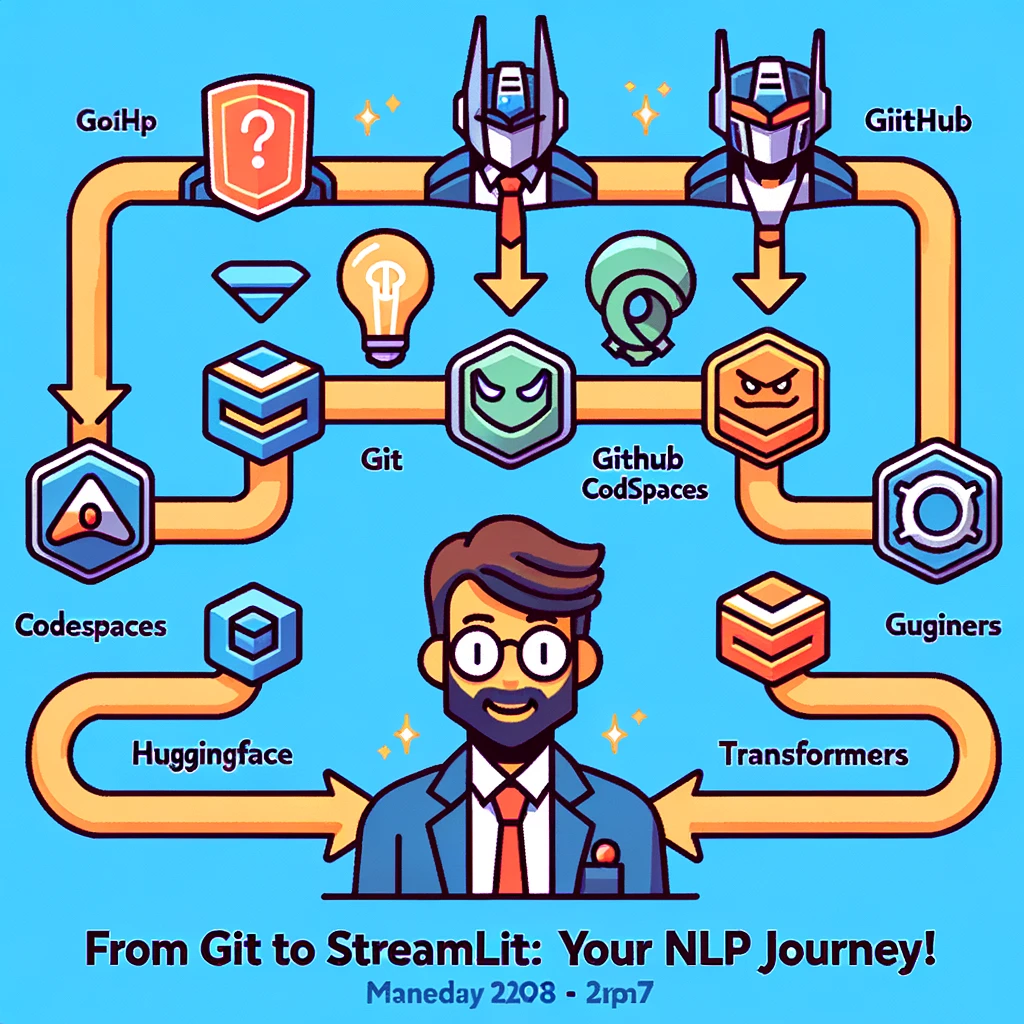Exploring NLP Pipelines: Insights from NLP CoP’s Custom Chatbot Webinar

Recent developments in consumer-facing tools for building and customizing chatbots have lowered the barrier to entry for many interested in making their own Natural Language Processing (NLP) tools.
At our November 2023 webinar, Amit Kohli provided orientation into the creation of an NLP model using Streamlit. The session was organized by the MERL Tech Natural Language Processing Community of Practice’s Sandbox working group – an open group for anyone to learn how to use and build NLP and GenAI-based tools.
The webinar was aimed at both participants without prior coding experience and those at the intermediate level. Amit showed how he used Streamlit to launch a fully functional website hosting an NLP model.
Streamlit was suggested as a gateway to building NLP applications, because it allows for real-time coding and updates. Its integration with GitHub Codespaces provides a live coding environment connected to a GitHub repository. Amit recommended this setup because it facilitates immediate deployment of updates and fosters collaboration through shared codebases.
Practical Demonstration
During the webinar, Amit showed how to build and deploy a simple application through Streamlit in order to bring an NLP model online. This brought up a discussion on the use of Hugging Face models, highlighting the importance of selecting the right models for specific applications and ensuring their effectiveness through testing.
While navigating the vast landscape of NLP models can be daunting, Amit suggested focusing on models that align with project requirements, including purpose, safety, and efficiency. From sentence transformers to Retrieval Augmented Generation frameworks, participants were guided on how to evaluate models based on their potential impact and performance.
The discussion also touched upon the roles of Streamlit and GitHub Codespaces in the development process. Streamlit provides an app design interface, while Codespaces offers a collaborative platform that ties the application directly to its codebase. This combination facilitates the development process, making it more accessible to a wider audience.
If you’d like to learn more, access the webinar recording and transcript here.
If you’re interested in a more basic orientation on building NLP tools, Register here for our March 21 beginner level webinar on building no-code custom chatbots using OpenAI’s GPTs and Hugging Face’s Assistants with Sarah Osman and Zach Tilton.
You might also like
-
What’s happening with GenAI Ethics and Governance?
-
Join the AI and African Evaluation Working Group Meet ‘n’ Mix Session on May 7!
-
Hands on with GenAI: predictions and observations from The MERL Tech Initiative and Oxford Policy Management’s ICT4D Training Day
-
When Might We Use AI for Evaluation Purposes? A discussion with New Directions for Evaluation (NDE) authors